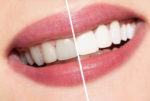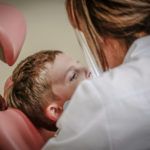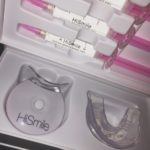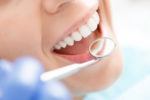Table of Contents
4 Inexpensive Way To Whiten Your Teeth At Home
Have you noticed that children tend to have whiter teeth? But as we age, our teeth can become yellow, if not appropriately maintained. The white color of the teeth is due to a layer called enamel. The enamel also acts as a protective layer. Our teeth can withstand low temperatures and various chemicals in food because of the enamel layer. But the enamel layer can get corroded and stained. The inner layer of the teeth called dentin is not as white as the outer enamel. Natural thinning of the white layer with age is very common. So, every year adults spend a lot of money on teeth whitening. People feel that a clear and bright smile can boost their confidence and make them look younger.
A wide range of products such as cosmetic whitening kits, strips, pastes, etc. is available in the market. They might give you a quick result but can have side effects too. It can increase the sensitivity and cause gum irritation. Dentists recommend the use of chemicals like potassium nitrate and sodium fluoride to subside the effects. But it may not work for everyone, and people might end up wasting money for further treatments. Natural, home-grown methods act slowly but are relatively harmless. Here are the best remedies and maintenance tips for having pearly white teeth.

1. Make dietary changes:
The primary reason for the yellowing of teeth is the food that we eat. Acidic food items such as lemon, berries can wear down the enamel layer more quickly. One should have them in moderate amounts. It is advisable to rinse your mouth with water after having them. The acid in our food can dissolve the calcium, and thus, our teeth become weak. Our staple drinks, such as tea, coffee, have a component called tannins. It can leave permanent stains on our teeth. The component is found in wine and dark soda drinks too. So, we should limit their consumption. Smoking also causes nicotine stains on your teeth. It is better to quit or at least minimize their usage.
Dairy products such as milk, yogurt, and cheese are good for oral hygiene. They contain lactic acid, which prevents tooth decay. Hard cheese removes the stuck food particles in your teeth and helps in cleansing. Fresh and raw vegetables increase the saliva content in the mouth and keep your teeth clean and white. Crunchy vegetables and fruits like carrot, apple, etc. act as a natural scrub and remove sticky particles from your mouth. Chewy, fibrous substances such as celery, cauliflowers, also aid in the cleansing of the teeth. Fruits like papaya and pineapple contain chemicals that are effective for teeth whitening.
2. Try oil pulling:
Oil pulling is the process of swishing oil in your mouth for a period of fifteen to twenty minutes. You should not swallow the oil but spit it out. You can use oils such as that of coconut, sesame, or olives. People mostly prefer coconut oil due to its various benefits. It has lauric acid that kills harmful bacteria and reduces bad breath too. It is also known for its immunity-boosting properties. Oil pulling prevents plaque formation and cavities. In general, oils are fatty molecules, and the outer layer of cells is also fatty substances. So when the cells come in contact with oil, they are coated with the additional fat layer. It helps in increasing the cell strength. Thus oil pulling can help us prevent gum diseases like gingivitis and reduce inflammation. It can also relieve stress and aids in weight loss.

3. Gargle with hydrogen peroxide:
Hydrogen peroxide is one of the commonly found components of first aid kits. It acts as a disinfectant, and people apply it to clean wounds and cuts. It is also an ingredient of toothpaste and mouthwashes. It is an oxidizing agent and can kill harmful bacteria in the mouth. You can buy a three percent concentration of the solution from drug stores and use it for gargling. It can treat gum diseases, mouth ulcers, and sore throat. It is also an excellent bleaching material and helps in whitening of the teeth. One needs to take one part of the solution and two parts with water and gargle for thirty seconds. You should not swallow as it could cause problems like stomach upset, lung irritation (only when you take a concentrated version).
4. Use baking soda and activated charcoal
Activated charcoal is made of natural products like coconut shells, burnt wood, etc. It is available in fine powder form in pharmacies at a price as less as seven dollars. It has been used as an absorbent in the medical field since the early 18th century. It absorbs toxins and is used for curing poisoning, drug overdose, and for reducing underarm odor. Nowadays, it is a common component of shampoos, face washes, and even toothpaste. You can buy the powder form, mix it with paste or water, and use it for cleaning the teeth. It is very abrasive, so you need to use your fingers to apply it. It is advisable to use it twice or thrice a week as washing off the charcoal takes time, and using it more often can lead to erosion of the enamel layer. One should consult a dentist before going for the charcoal treatment.

Baking Soda is another component that is commonly available in our homes and is used for teeth whitening. You can mix it with water/ coconut oil/ toothpaste and use it for brushing. It is mildly abrasive and removes stains due to food items, drinks, and smoking. It can also dissolve your plaques and prevent tooth decay. The alkaline solution of baking soda and water neutralizes the acidic nature of ulcers and inflammations. The alkaline nature also freshens your breath. You can mix it with various substances like lime juice, vinegar, peppermint extract or strawberries that could help if you do not like its gritty taste. But you should not keep it on the teeth for more than two minutes as it can remove the enamel layer along with the discoloration. It is not safe for small kids. You should teach them the importance of oral hygiene and check if they brush regularly. A dentist may prescribe you a cap like a white crown if you are suffering from cavities. This often comes after a careful diagnosis of the mouth sometimes involving dental CT scans, and other methods.
5. Use neem products:
Neem twigs were used in India as toothbrushes centuries ago. One needs to remove the bark so that the twigs are not very harsh on the gums. Neem has strong anti-microbial properties and can keep the germs at bay. Chewing neem leaves can help you get rid of bad breath. Nowadays, neem bark powder is available that helps you prevent the onset of dental cavities. You can put neem leaves in boiling and let it simmer. Once the solution cools down, you can use it for stain removal. Alternatively, one can use neem tea bags too. Also, chewing neem leaves can add that extra sheen to your teeth.
6. Use of common household herbs for whitening:
It may be surprising to know the secret to glistening white teeth is mostly available in your home. The first among the lot is the turmeric. Though the powder is yellow, its abrasive nature helps to remove stains on your teeth. It is antimicrobial and anti-inflammatory too. So, it helps in preventing dental decays and mouth ulcers also. Second, comes the leaves of holy basil. The leaves of the basil have an excellent bleaching property. One can chew the leaves directly, or you sundry them, make a powder, and then add them to your toothpaste. Similarly, we can use sage leaves too.
Like the neem twigs, in the African continent, the root of the licorice plant has been used for brushing and teeth whitening. It is even useful for curing sore throat.
Did you know that peels of fruits like banana and orange have dental-care properties? The orange peels acidic nature helps to remove stains and whiten the teeth naturally. On the other hand, the banana peel is rich in minerals like magnesium, potassium, etc. These, too, have a brightening effect on your teeth.
The reason for keeping your teeth white and clean is not for flashing that confident smile alone. It reduces inflammation in the mouth which interferes with metabolism. Thus, healthy teeth are responsible for good digestion and help you maintain proper weight. Similarly, healthy teeth and gums help you control blood sugar levels and have an essential role in preventing diabetes. It is imperative to remember that bacterial infections in your mouth can even cause infection in the heart. An unhealthy mouth is even linked to diseases like dementia and Alzheimer’s.
In general, it is best to maintain good oral health. All you need to do is brush twice a day with a fine brush and fluoride paste. Do not forget to floss as it removes the particles stuck in between your teeth and prevents staining. Limit the consumption of sugary and acidic substances. You should drink water after having tea/ coffee/ red wine and dark juices.






